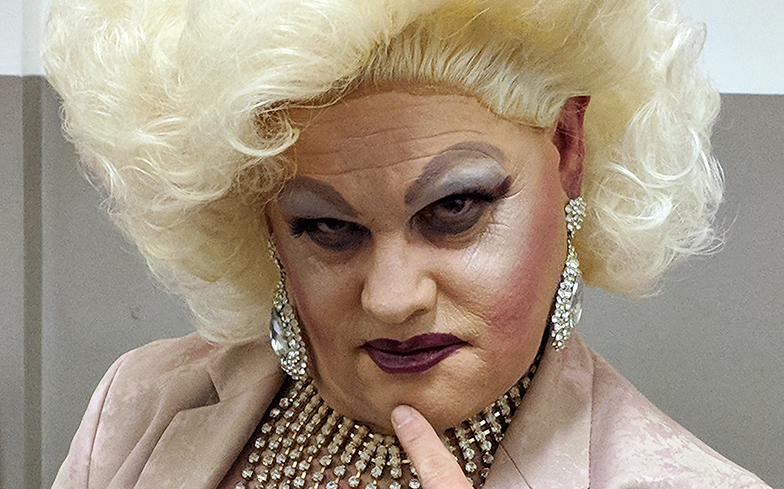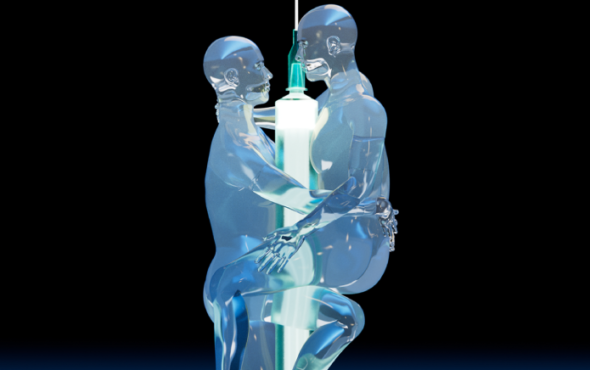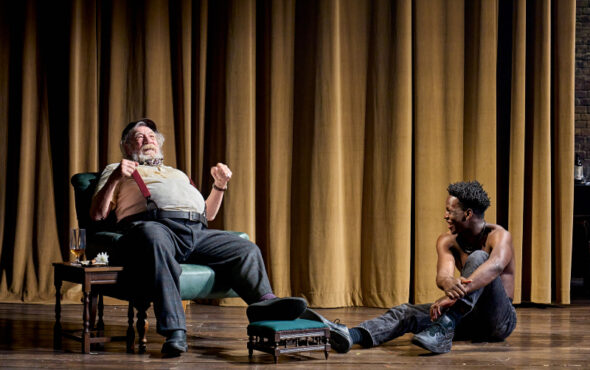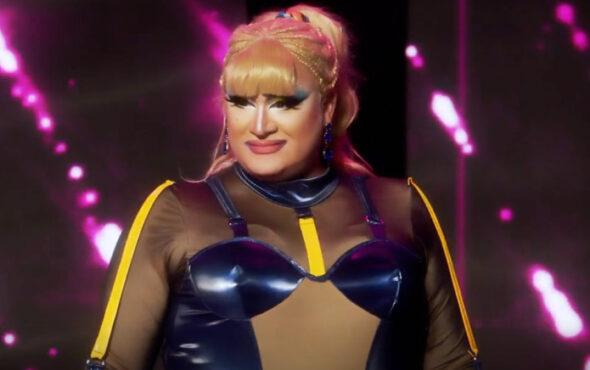
It’s no surprise that members of the LGBTQ community often experience loneliness, but having a disability on top of that can make life even more difficult.
British drag queen Wayne Allingham was born with hemiparesis, a condition from the stroke family that causes muscle weakness in the right side of his body. He’s also got a ‘bent arm’ – which he jokingly tells us is his “gammy leg” – but none of this stopped him from fulfilling his dream of performing on stage.
“I first got into drag many, many years ago when I was about 17 years old, back in the 1980s,” he recalls. “I did it for a couple of years and then I gave it up, but I came back about eight years ago because I love performing. It’s all about putting that smile on people’s faces and making them laugh. If I’m going to see a drag show, I want to be entertained!”
Wayne’s drag alter ego is Sugar Cube, a “very funny and witty disabled drag queen” who prioritises humour, games and audience interaction over high-fashion runway looks and throwing shade. So it comes as no surprise that she’s not the biggest fan of a little show called RuPaul’s Drag Race…
“Sugar hates Drag Race,” Wayne jokes. “She’s a very traditional, old-school queen in that sense. I do like watching the show, and I do like RuPaul’s ethics, and how the queens have to make their own outfits to hone their craft, but there’s no need to be bitchy all the time. American drag is totally different to English drag.”
Wayne also believes it’s about time that the show featured a drag queen with a disability, which it has yet to do over its 10 year run, and that it would be “absolutely huge” for the disabled community.
“It would showcase diversity,” he explains. “It would show that we are human, that we can do things that able bodied people can do – sometimes a bit slower – and I think it would encourage a lot more support for disabled people. We don’t want to be felt sorry for, because disability is a gift, but it’s about understanding. And disability isn’t always visual, you could have mental health problems or brain damage but look totally able-bodied. There’s a lot of things about disability that people don’t understand.”
Of course, there are some obstacles that come with being a disabled drag queen. “The biggest challenge I face is people staring, because my disability is visual, you can see it,” he says. Work is also hard to find, as many venues aren’t accessible enough for disabled performers, or don’t seem willing to hire them.
“The shows are far and few between,” he explains. “Being a disabled person, we have to fight, we have to bring so much to the table just to say, ‘Give us a chance’. I suppose you could say there’s discrimination. London is full of drag queens, and it’s so cut throat out there. You’ve got some amazing acts, but it’s the newbies who get all the work first. The venues need to have diversity in their artists.”
On his mission to create a more accepting world for disabled LGBTQ people, Wayne launched an inclusive club night called Queer & Here, which has so far graced two of London’s premier queer performance spaces, Royal Vauxhall Tavern and Two Brewers. The night gives disabled people a platform to showcase their talents, whether that’s drag or singing or – like one of his friends – ballroom dancing in a wheelchair.
“There are nights out in London like Bar Wotever and Cocoa Butter which are very diverse, and we’re trying to do that for the disabled community,” he explains. “To be honest, I’m shocked that there aren’t already nights like this, especially in London. And it’s not just for disabled people, it’s for everyone to mingle. If we don’t do that, how are people going to understand each other?”
So far, Wayne says Royal Vauxhall Tavern and Two Brewers are “the only two accessible venues who want to come on board” with his queer disabled night. When venues don’t cater to disabled customers, it can make a daunting experience even more off-putting. “When you go out, are people even going to talk to you? Or are you just going to sit in the corner by yourself?” he says of the concerns disabled people in the community face. Now, he’s calling on more venues to become accessible to make socialising easier.
“There’s a lot of talk about diversity in the LGBTQ community, but we are not diverse until everyone is accepted and given a platform,” he says. “Being a disabled person, I do go out and I do make sure that I’m seen because I don’t give a damn what people think. But there are a lot of disabled people who can’t go out, or won’t go out because they’ve got to plan their evening and make sure the venue is suitable – if you’ve got autism, is there a quiet space? If you’re in a wheelchair, are there same-level toilets? A lot needs to change.”
As well as hosting Queer & Here, Wayne also runs a group for disabled LGBTQ people called Unique which takes place twice a month. They go for coffee, and also meet at London Friends in King’s Cross of an evening. “It’s a social evening to meet new people,” he says. But while dedicated events are an essential part of the disabled LGBTQ experience, Wayne believes it’s everyone’s duty, disabled or not, to make the queer community more inclusive.
“LGBTQ people are so quick to judge each other and shame each other for their differences, but we’re a community, and we need to come together,” he pleas. “Let’s become a big community, let’s not divide ourselves, let’s come together.”
To find out more about living with hemiparesis and how to offer support, visit hemihelp.org.uk





